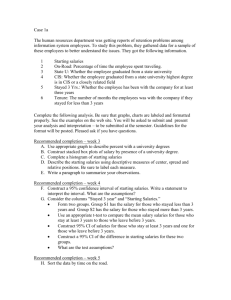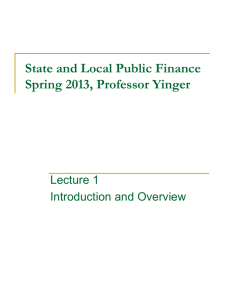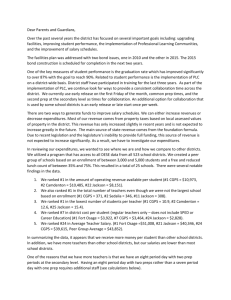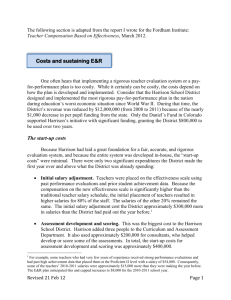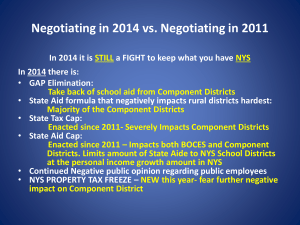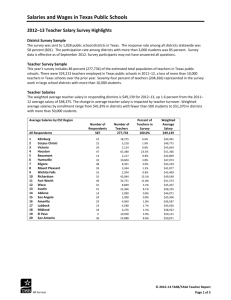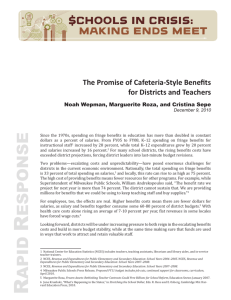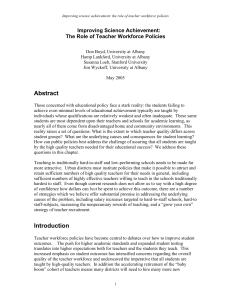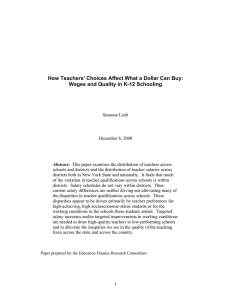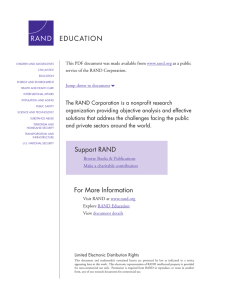A Hard Struggle Looming Ahead By Lucy and Keiny
advertisement
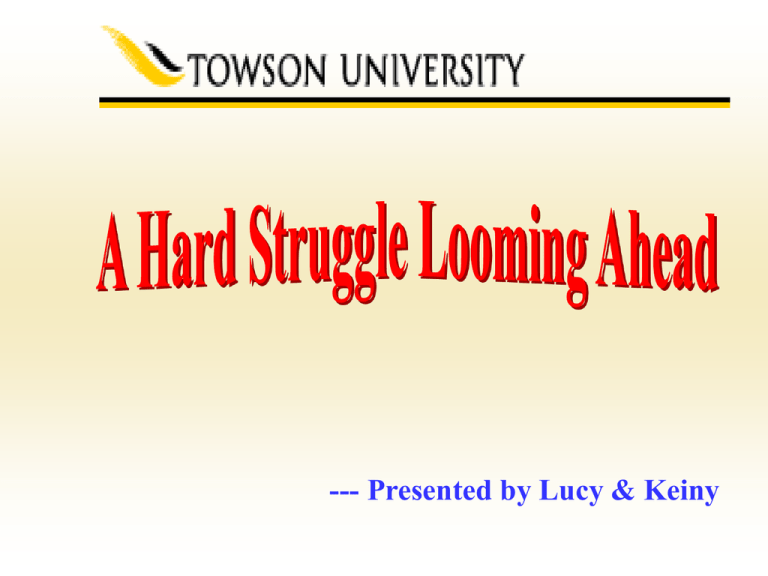
--- Presented by Lucy & Keiny Introduction It is clear that throughout the world, the teaching profession is in crisis because of the increase in population growth and a decrease in the number of people wanting to become teachers. It is widely accepted that teacher quality is one of the most important factors for students achievement. It is fortunate to have many highly qualified individuals in America’s classrooms today. However, the United States is clearly in need of many more highly qualified teachers and must continue to work over the next decade to meet the goal of filling the classrooms. public school enrollment 2008 2010 elementary school 54m 17% high school 26 % Teachers Needed 3.35 m Acute Teacher Shortage Urban Districts Some Rural Areas Many Branches of Special Education Math and Science in Many Districts Bilingual Education. After 1 yr. 14 After 2 yrs. 24 After 3 yrs. 33 After 4 yrs. 40 After 5 yrs. 46 0 10 20 30 percent It is clear that the percentage of beginning teachers having left teaching occupation is increasing by years of experience. 40 50 Reasons of Teacher Turnover lack of student motivation student discipline problems low salaries lack of support from school administration lack of teacher influence over decision making Based on many studies, it is concluded that salary and teacher morale are the real problems. To begin with, salary is the major barrier to entering the profession when compared to other professionals. Average Salary with 16 years Experience Teachers $40,000 Accounts $49,200 Computer scientists $66,700 Engineers $68,200 No one ever said that getting into teaching would make one wealthy, but teachers should expect to have a life of economic dignity. Teachers should be able to purchase a home, send their children to college, and retire with enough assets to maintain a modest standard of living. Many new teachers are finding that they are ill equipped to deal with today's increasingly challenging classroom situation. Many more are lured away by higher paying jobs in other fields. And as a result, more and more high quality individuals are leaving the classroom within their first two years of teaching. Teacher Morale or Satisfaction Morale has been connected to a variety of issues ranging from discipline policies to academic support. Many view teaching as low-status work, with teachers being semi-skilled workers. It should also be noted that teacher morale is associated with a sense of respect and appreciation.Teachers must be viewed as professionals who are part of a team that helps students succeed. This view allows teachers to be supported and in turn to be supporters of parents and the schools teachers and parents serve. To Recruit & Retain Teachers “The No Child Left Behind Act of 2001”, signed into law by President Bush, did mention “Teacher Qualifications” . Happily, the “highly qualified” requirement is already in effect for newly hired paraprofessionals. Thirty-four states have now required prospective high school teachers to demonstrate subject-matter expertise by passing a test in the subject they plan to teach. Salary Incentives Better Programs "Poaching" Teachers Grow-your-own Programs Rehiring Retirees Recruiting overseas Help With Housing Problems Salary Incentives Increasing salaries for all teachers and developing differentiated pay scales that reward expert teachers and those who take on specialized roles and responsibilities. Reward those willing to teach in high-need areas where teacher retention is problematic by giving them higher salaries than those teaching in areas and fields in which there is a glut of qualified teachers. Ø Salary Incentives Ø Several cities in Texas offer signing bonuses between $1,500 and $2,000 for teachers of secondary mathematics and science. States such as Nevada and New Jersey have raised average teacher salaries to compete with other districts and other careers. Better Programs Though low pay remains a concern for teachers in many districts, raising salaries alone will not solve the overall problem. Better programs to initiate and support new teachers are also critical. It is widely thought that beginning teachers who have access to intensive mentoring by expert colleagues are much less likely to leave teaching in the early years. Ø Better Programs some examples of school districts in Cincinnati, Columbus, and Toledo, Ohio, who have been able to reduce the attrition rates of new teachers by more than two-thirds by connecting new teachers with expert mentors and providing both with joint release time. Such programs not only encourage new teachers to stay in the profession, but also enable them to become competent more quickly. Ø Rural and high-poverty districts and schools should encourage graduates and paraprofessionals already familiar with the culture and challenges associated with those environments to become certified. Ø "Poaching" Teachers "Poaching" teachers from other school districts or other states is one solution to the teacher shortage that some say is unethical but which still happens frequently. California recruiters lure teachers from Colorado and other states with benefits such as higher salaries, smaller classes, and hiring during the first interview at job fairs. Rehiring Retirees In Georgia, school districts may hire retired school teachers but only to fill positions in lowperforming schools. Only 1 percent of a school district's full-time staff can be retirees. Ø Recruiting overseas In New York City, school officials recruited teachers from Italy, Spain, Barbados, Jamaica, and Austria and conducted a $6 million ad campaign to tempt teachers into the classroom for the 2001-2002 school year. Ø Help With Housing Problems Chicago offers a resource center to help teachers find housing discounts, receive counseling on home buying, and research city neighborhoods. Cities like Cincinnati, Baltimore, and Chattanooga offer housing loans, below-market-rate mortgages, reduced closing costs, and free counseling to teachers. Ø Situations In China ---Comparison and Contrast Compared with the problems in the United States, China is also faced with the same situation. It is estimated that senior high school education should reach a 60 percent gross attendance rate and there will be a shortage of 1.16 million people in the teachers’ ranks in 2005. It has also become an important factor hindering the sustained and healthy development of China's educational undertakings. Similarity Both countries share most of the factors contributing to teacher shortages, such as low salaries, low social status and students’ discipline problems. Moreover, various strategies to attract and keep teachers applied in both nations are significantly alike. To attract more teachers, China is trying to make teaching a more desirable and respected profession as well. Dissimilarity To cope with the shortage of teachers, the China Education Commission declares that seniormiddle-school teachers should be graduates with two years' training in professional institutes. The government designated September 10 as Teachers' Day and made teachers' colleges tuition free. As for the problem of the teacher shortages in schools located in remote and poverty-stricken areas, the central government sends teachers to underdeveloped regions to train local schoolteachers. Conclusion & Expectation Teacher shortages would melt away. Our schools would improve. Our children would learn more. Our teachers would get better, thus easing our quality problem at the same time we met the quantity challenge. --- July.26th, 2004




